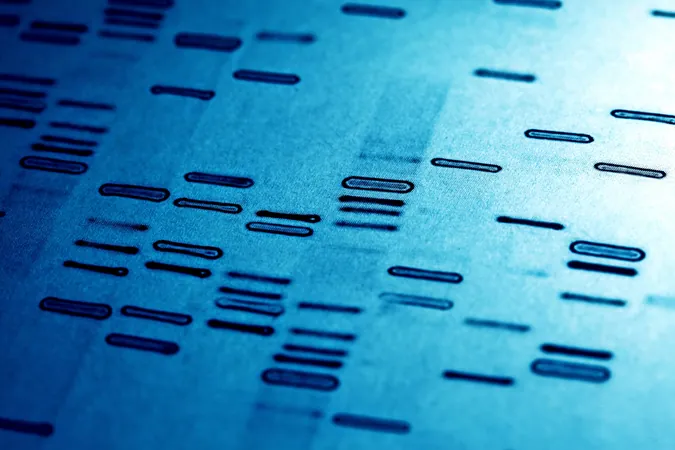
Revolutionary DNA Technique Creates Stunning 3D Facial Images: Could It Solve Crimes?
2025-05-09
Author: William
A groundbreaking new method is set to transform the world of criminal investigations by using DNA to recreate 3D facial models.
Meet Difface: The Future of Facial Reconstruction
Researchers have developed an innovative computational tool known as Difface, which leverages the nuances of genetic code—specifically single nucleotide polymorphisms (SNPs)—to generate '3D facial point clouds.' These data clusters effectively map out the contours and features of a person’s face.
A Leap Forward in Investigative Techniques
The findings were published in the respected journal Advanced Science, and they present a potential game-changer for law enforcement. With this technique, authorities could visualize an unknown suspect's face solely through DNA material.
Tested and Proven
The researchers put Difface to the test using a Chinese genetic database filled with SNPs, demonstrating its capability to produce accurate facial reconstructions based on DNA data. The accuracy soared even higher when researchers integrated additional details like age, sex, and body mass index.
Future-Proofing Facial Models
"Incredible as it may sound, Difface can create 3D facial images from just DNA alone, even simulating appearances at different life stages," revealed Luonan Chen of the Chinese Academy of Sciences, a key contributor to the study.
Challenges and Ethical Concerns
While the initial results are promising, the technique is still in development. Researchers note that ensuring the model works across various ethnic groups and assessing whether different genetic markers are needed for certain facial traits will be vital in refining Difface.
However, the ethical implications cannot be ignored. Critics argue that the ability to predict physical traits from genetic data heightens the risks of misuse, possibly leading to genetic discrimination and serious breaches of privacy.
The Fine Line in Forensic DNA Phenotyping
Forensic DNA phenotyping (FDP) has already proven invaluable in unresolved criminal cases, often providing leads when conventional investigative methods are exhausted. However, the ability to predict complex traits like facial structure raises alarms about misidentification and wrongful suspicion, especially among diverse communities.
In a notable case from 2022, the Edmonton Police Service in Canada sought public assistance by releasing a computer-generated image based on DNA phenotyping linked to a 2019 sexual assault case. They later retracted the request amidst criticism concerning the transparency of the methods used by Parabon NanoLabs, the firm behind the image.
A New Era for Crime-solving or a Pandora's Box?
As advancements like Difface emerge, the potential for revolutionary breakthroughs in criminal investigations is immense—yet so are the ethical dilemmas. The future will hinge on finding the right balance between leveraging science for justice and safeguarding individual rights.









 Brasil (PT)
Brasil (PT)
 Canada (EN)
Canada (EN)
 Chile (ES)
Chile (ES)
 Česko (CS)
Česko (CS)
 대한민국 (KO)
대한민국 (KO)
 España (ES)
España (ES)
 France (FR)
France (FR)
 Hong Kong (EN)
Hong Kong (EN)
 Italia (IT)
Italia (IT)
 日本 (JA)
日本 (JA)
 Magyarország (HU)
Magyarország (HU)
 Norge (NO)
Norge (NO)
 Polska (PL)
Polska (PL)
 Schweiz (DE)
Schweiz (DE)
 Singapore (EN)
Singapore (EN)
 Sverige (SV)
Sverige (SV)
 Suomi (FI)
Suomi (FI)
 Türkiye (TR)
Türkiye (TR)
 الإمارات العربية المتحدة (AR)
الإمارات العربية المتحدة (AR)